Pupils
Art and Design: Textiles
Course Information
| Literacy | **** |
| Numeracy | * |
| Communications | ***** |
| Creativity | ***** |
| Practical | ***** |
| Group Work | ** |
| Examination Assessment | 0% |
| Non Examination Assessment | 100% |
| EBacc | x |
| Examination Board | AQA |
| Course | GCSE |
General Information
The course provides opportunities for each pupil to recognise and develop their own creative ability and to appreciate the relevance of Textile Design to everyday life and the wider environment. Pupils will study a wide range of textiles techniques such as felting, applique, hand embroidery, free machine embroidery, weaving, fabric dying, printing, digital and manual manipulation, and more so that a final portfolio of work can be produced.
What will I need to succeed?
- Be willing to think for yourself.
- Try to show your individuality.
- Be willing to work independently.
- Want to try out different textiles and art techniques.
- Be willing to work in your own time and take it seriously.
- Persevere and don’t give up. It really is worth it!
Expected Subject Content
During Year 10, all Textile Design pupils will follow a distinct programme of study that is designed to build practical skill, independence and visual literacy. Pupils will undertake a variety of small units of work designed to enable them to build a portfolio of work throughout Years 10 & 11.
Each pupil’s individual skills will be directed and counselled through a variety of projects. Examples being work with printed, weaved, dyed, and applied textile designs. Fine Art, collage, print making, and embroidered and stitched works.
Some projects will place emphasis purely on visual aesthetics, whilst others will emphasise other important factors, such as the function and suitability of a design for a given purpose or the personal exploration of a given theme. All of our units of work are reviewed regularly and will usually respond to the exam board’s requirements and suggested exam study topics.
All projects will include an element of critical study, and drawing and constructing directly from observation, as analytical study will provide many concepts on which to base design for original textiles based artwork. The design process, showing sequential stages through which ideas pass before being finally realised, is considered an important part of the course, as are values of craftsmanship, both in execution and presentation of work.
When pupils show particular strength in an area of Textile Design, they will be encouraged to specialise in this during the examination period.
Please note that pupils cannot study GCSE Art, craft and design or GCSE Photography alongside this course.
All Art and Design GCSEs are 100% coursework, which means the majority of work undertaken in the classroom, and for homework, from September Year 10 will be submitted for final assessment. The expected weekly homework time for each subject is 1-2 hours.
Expected Assessment Requirements (1-9 Grades)
Examination: 40%
Pupils will receive the question paper in advance, so that preparation can be done thoroughly (8-10 weeks will be allowed for this). 10 hours will be allowed for the actual examination, plus time to prepare materials and present the completed project.
All preliminary written work, designs, drawings etc. will be presented for examination with the completed ‘examination piece’, which is likely to be wall hanging, weaving, wearable textile, printed piece, or a mixed media response. Each pupil will decide on the type of response they wish to make from the choice of questions/stimuli.
Coursework: 60%
For examination, one extended project is required and any other number of smaller projects in addition. Regardless of the number of units submitted, all assessment objectives must be met in the coursework as a whole. Each will show the development of ideas and research, leading to completed designs and works of art. A definite theme or design brief will be the starting point for each unit and, from this, pupils can produce any quantity of work in a variety of media. Some projects will take one term others may stretch over two, with continuous formative assessment taking place. Sketchbooks are a continuous homework element of the course. Pupils are expected to visit local art galleries and museums and to take a general interest in the whole environment. Trips are often arranged to gallery exhibitions in London and Hampshire to support learning and engagement.
What careers it can lead to after leaving Swanmore College
|
Clothing Manufacturer |
Illustrator |
Fashion Consultant |
|
Surface Designer |
Interior Designer |
Fashion Merchandising |
|
Pattern Designer |
Stylist |
Costume Designer |
|
Fashion Buyer |
Packaging Designer |
Quilt/Rug/Linen Designer |
|
Advertising |
Set Design |
Fabric/textiles Designer |
|
Computer Graphics |
Accessory Designer (shoes, bags, hats) |
T-shirt Designer |
|
Fashion Design |
Dressmaker |
|
|
Fashion Journalism |
Embroiderer |
